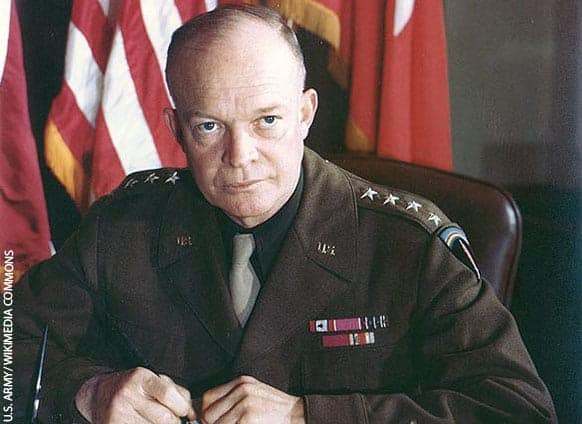Request Check Your Shocks


No matter how prepared you think you are, the unknown will always find a way to slip into the equation. It’s inevitable. The true mark of a leader isn’t the ability to avoid uncertainty and fear—it’s the ability to confront it, adapt to it, and use it as a springboard for decisive action.
In this blog, we’ll explore how leaders can navigate the murky waters of uncertainty with confidence, tapping into core traits like courage, action, and service. We’ll also dive into practical strategies and real-life examples that show how uncertainty and fear, rather than paralyzing a leader, can become a driving force for progress and resilience.
The name of this section is “The Nature of Uncertainty in Leadership,” but it might as well be “The Nature of Uncertainty in Life.” If you really take some time to think about it, hardly anything in life is certain…except (as the old saying goes) death and taxes.
In an uncertain world, how do you lead with any kind of confidence? If you know that things could take a turn at any given moment, and you could be standing at the front of the room all alone with everyone looking at you for answers, how do you possibly undertake a leadership position?
1. Flexibility
I was listening to a doctor talk about healing trauma, and she said that the one sign of a healthy personality is flexibility. People who can easily adapt to new circumstances and take curve balls are healthier than those who are rigid, stuck in their ways, and refuse to let anyone else share an idea or get a word in edgewise.
So, if you aren’t the healthiest of personalities by this definition, how can you possibly hope to navigate uncertainty and fear? I have always heard that it’s easier to start from where you are. You start with what you have—what you’re good at—and build from there. If you start from where you aren’t or from some kind of deficit, you’ll have a heck of a steep climb trying to get where you’re going.
2. Courage
In the face of uncertainty and fear, courage is a core leadership trait that you can develop. But first, give yourself credit for where you are already being courageous. That’s key. Most of us don’t give ourselves enough credit.
3. Bias for Action
Another core trait is a bias for action. You want to keep moving so you don’t get stagnant. You’re either green and growing or ripe and rotten. So look at ways in which you were able to act despite the uncertainty looming at every corner.
4. Heart of Service
The final core trait (and arguably the one at the heart of all real leadership) is the heart of service. When you are focused more on how you can help your team or how you can assist them in achieving the mission at hand, you don’t have to worry so much about figuring out what to do next; you just do what’s necessary to help them.
When you consider a heart of service in terms of a leadership style, you really don’t have to dread figuring out what to do next. Sometimes, it will present itself, and sometimes it won’t, but I’ll tell you one thing: real leaders listen to their team. Get some ideas. Ask good questions. Let the team tell you what they need to succeed, and then make that happen.
Let’s say you’ve done this, and no one had any idea. They are all looking to you. Now is the time to develop options and talk to them about how they see things unfolding with any given one of them. Anyone is happy to give their opinion about how something might affect them, even if they don’t know what the next step is.
Focus on forward momentum, even if you don’t know exactly what the plan is yet. You keep digging, keep focusing forward, keep doing what’s best for your team, and the rest will figure itself out.
I once heard a story of several notable students who were at Columbine High School during that difficult time in 1999. They were certainly in the middle of a war zone that day.
During the shooting, a teacher had been injured in the science pod of the building, and some students managed to get him and drag him to their room, where they all stayed huddled with the door locked.
He was bleeding badly and had multiple wounds. These kids did not have access to a doctor or triage medical care, so they did their absolute best. Three Eagle Scouts happened to be in that classroom, and they had basic First Aid training, so they got to work with what they had.
They were able to use fashion tourniquets out of what they had to try and stabilize the bleeding. They had one student make a large sign and hold it in the window of the classroom, telling the media where they were and what their situation was. They communicated that there was someone wounded in the room, and they needed immediate help.
They continued to administer as much medical treatment as they knew how, despite the fact that their school was still under siege. The way they took control of the situation and the way they applied everything they could, enlisting help from the team at hand, that uncertainty turned their fear into fuel. It gave them something to focus on, to work toward as a team, and to keep them stable in the moment when anyone else would have been absolutely terrified.
I mentioned before that if your team doesn’t know the direction in which they need to go, presenting them with options is always a good idea. Everyone will be happy to weigh in as to how they would be affected by any given decision, but that’s not all.
When it comes to inspiring teams to act during uncertain times, being vulnerable, coupled with asking great questions, is the way to go. If you’ve hit a sticking point, it’s almost like you know everything there is to know, and your knowledge cannot take you any further. That’s not true.
When you come up with better questions about how to achieve your mission, when you learn how to ask really critical questions that inspire people to think outside the box, you’re leading like a real leader despite uncertainty and fear.
The trick is that you just have to find that one question that sparks some initiative in your team. I’m not going to pretend that I know what that is. It could be just about anything from “How do we get pizza delivered at this hour?” to “How can we make sure our fuel injectors don’t leak at the time of launch?”
It’s very case-specific, of course, but you need to figure out what this is for your team, and then get the momentum of everyone behind it as they try to answer that question.
I said something about being vulnerable above, and I meant it. When people know you’re human, when they see you’re scared but you keep going, you inspire them to do the same. They may tuck in behind you for a bit, but that’s okay. You let them know that, yes, this situation is hard, but it’s not insurmountable. That’s leading through fear.
Uncertainty isn’t a sign to stop; it’s a call to act. Great leaders don’t wait for perfect conditions—they move forward with courage, clarity, and a commitment to serve. By embracing core traits like flexibility, a bias for action, and a heart of service, leaders can transform fear into fuel and uncertainty into opportunity.
Remember, leadership isn’t about having all the answers. It’s about asking the right questions, inspiring your team to think creatively, and fostering collaboration. When vulnerability and decisive action come together, uncertainty becomes less of an obstacle and more of a proving ground for growth.
Ultimately, the true measure of leadership is the ability to steady the ship when the waters are rough. It’s in those moments of doubt, chaos, and challenge that leaders create their greatest impact—not by avoiding uncertainty but by confidently turning it into action.
You can find my new book, Turn Your Fear into Fuel, here. You’ll find all the courage and inspiration you need to lead through uncertainty and fear, finding your way to demonstrate the real leadership you know is inside of you.
I’ll see you at the top…

If you’re human, you’ve been afraid. Heck, you’ve probably even experienced the fear of something irrational, like the boogeyman or a monster under the bed. Those things aren’t real, but we experience them as though they are. I’m willing to bet that if you’re reading...

I’ve been talking about fear for more than twenty-five years—on stages, in boardrooms, and across kitchen tables with people who were searching for a way forward. The phrase “turn your fear into fuel” has been in my vocabulary for decades. But for one reason or...

A Monumental Day to Celebrate Today marks the 15th anniversary of Primerica’s IPO—a day that will forever be etched in my memory. April 1, 2010, was not just a milestone for the company but a testament to resilience, perseverance, and the power of pushing through...

Originally Published Aug 2016 History tells our past and guides our future, but only if we assess it with honesty. Several years ago, my wife, Loveanne, and I went on a trip to Europe. Those who don’t know me will soon find out that I am quite the history buff. Part...

“The scarcest resource in the world is not oil, it’s leadership.”
As Co-CEO of the largest independent financal services company in North America, John Addison’s skill as a leader was tested and honed daily. He retired in 2015 after taking the company and it’s people to massive heights. He’s just not done helping people get to the top. Today, he’s at the helm of Addison Leadership Group, INC working daily to mentor and educate new leaders.

0 Comments